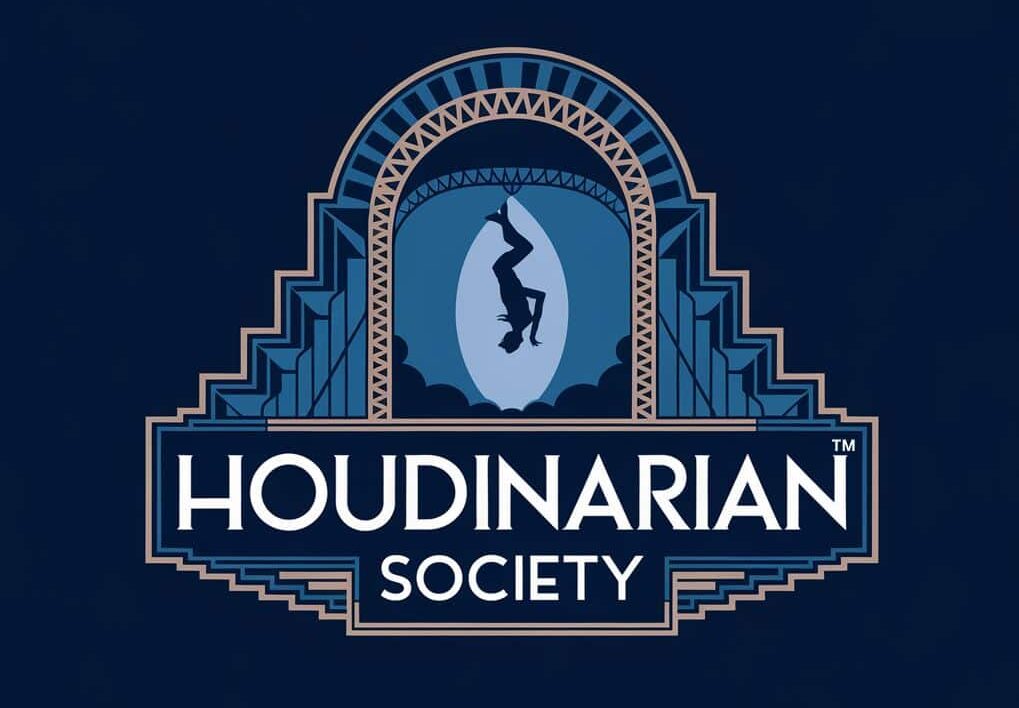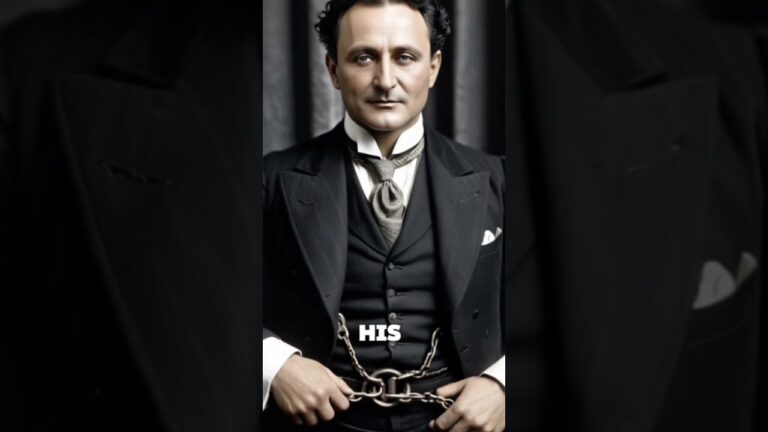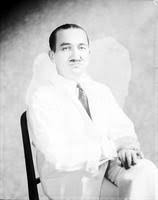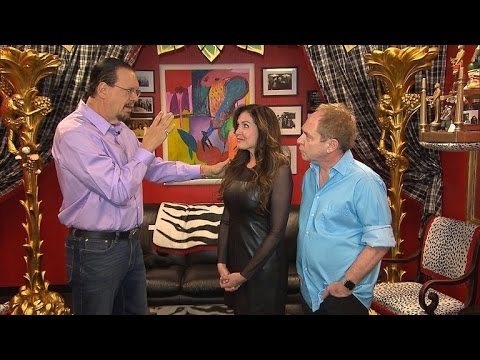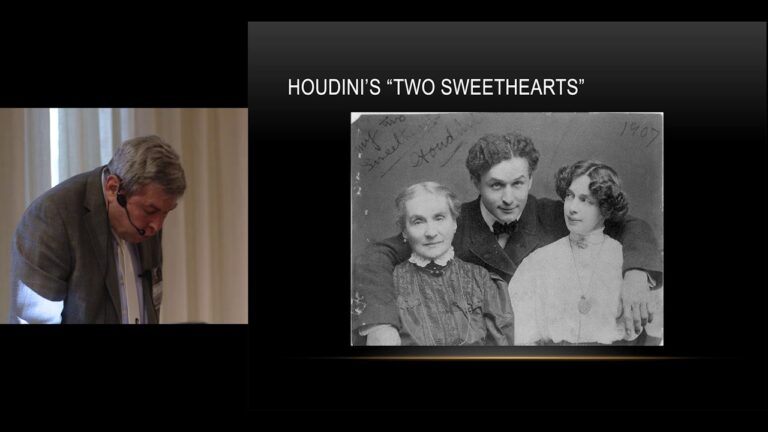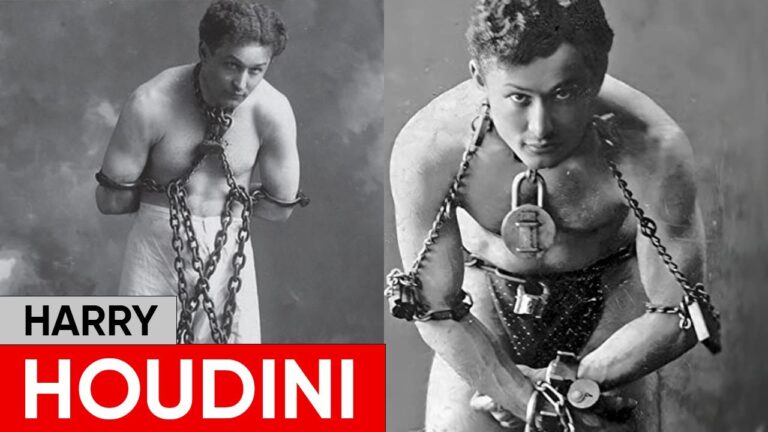Academic Papers on Houdini: Exploring the Intersection of Magic and Scholarship
Harry Houdini’s influence extends far beyond the stage. His unique intersection of magic, science, and showmanship is a popular topic for scholars. Research papers examining Houdini’s work reveal his deep impact on fields like psychology, theater studies, and cultural analysis. This makes him one of the most academically studied magicians in history.
The master magician’s techniques and methods continue to fascinate researchers. They analyze everything from his escape artistry to his fight against fake spiritualists. His partnership with figures like Arthur Conan Doyle adds another layer of scholarly interest. Their relationship highlighted the tension between skepticism and belief in the supernatural.
You’ll find that academic studies of Houdini often focus on his role as both an entertainer and a skeptic. His dedication to exposing fraudulent mediums while maintaining the mystery of his own performances creates a fascinating paradox that scholars still explore today.
Overview Of Houdini’s Cultural Impact

Harry Houdini’s influence extends far beyond the realm of magic performance. His revolutionary approach to entertainment and showmanship shaped both theatrical arts and public consciousness in ways that continue to resonate today.
Houdini In Popular Culture
His innovative techniques and showmanship transformed magic from simple tricks into grand theatrical events. You can see his influence in modern entertainment, from television specials to blockbuster films.
His name has become synonymous with escape artistry and impossible feats. When you hear someone called “a regular Houdini,” you instantly understand the reference to extraordinary skill and daring.
Modern magicians still study and adapt his methods. His signature moves, like the Chinese Water Torture Cell escape, remain benchmarks of dramatic performance.
The Historical Context Of Houdini’s Career
Houdini mastered the art of reading his audience during the formal entertainment scene of the 1890s. You might be surprised to learn he started in traditional magic shows before revolutionizing the field.
His career coincided with rapid industrialization and social change. His escapes from handcuffs and prison cells spoke to people’s fears about modern life and institutional control.
His performances challenged social norms and expectations. You could watch him break free from any restraint, suggesting liberation from life’s constraints.
The Enduring Legacy Of Houdini
Modern escapologists measure their skills against his achievements. His techniques remain foundational to the craft of magic performance.
His impact reaches into academic study. Scholars examine his work to understand performance art and social dynamics.
His crusade against fraudulent mediums established a tradition of skepticism in magic. You can trace today’s magic-based debunking shows directly to his influence.
His personal archives and collections continue to provide valuable insights. Magic enthusiasts and historians still discover new aspects of his methods and career.
Theatrical Innovations And Performance Theory

The integration of magic into theatrical performances revolutionized early 20th-century entertainment. Magic acts pushed technical boundaries and created new standards for theatrical productions.
Houdini’s Contributions To Performance Art
Houdini transformed theatrical staging by combining dramatic elements with illusions. His escape acts merged physical prowess with psychological manipulation, creating multi-layered performances that went beyond simple tricks.
You can see his influence in the way he used audience participation. He would invite skeptics on stage and encourage close inspection of his props, adding authenticity to his shows.
His most innovative contribution was the three-act structure for magic performances:
- The setup: Building anticipation
- The struggle: Creating dramatic tension
- The escape: Delivering the payoff
Analysis Of Houdini’s Stagecraft And Illusions
Houdini’s mastery of stagecraft included precise timing and theatrical lighting. His extensive collection of performance materials shows meticulous planning behind each illusion.
He pioneered the use of custom-built props and equipment. Each piece underwent rigorous testing to ensure both safety and dramatic impact.
Key elements of his stagecraft included:
- Strategic placement of assistants
- Carefully chosen angles for maximum visibility
- Dynamic movement patterns across the stage
Scholarly Interpretations Of Houdini’s Performances
Modern performance theorists examine Houdini’s work through multiple lenses. His acts demonstrated the intersection of art and technology, blending mechanical innovation with artistic expression.
Your understanding of his impact grows when you consider the psychological elements. He created moments of genuine suspense by playing with audience expectations.
Scholars point to three key aspects of his performance style:
- Physical authenticity: Real danger mixed with controlled risk
- Emotional manipulation: Building and releasing tension
- Technical innovation: Advancing the boundaries of what seemed possible
Houdini And Jewish-American Identity

Harry Houdini’s Jewish heritage shaped his rise to fame and influenced key aspects of his public persona. His immigrant story and religious background provide vital context for both his career choices and his lasting cultural impact.
Houdini’s Background And Heritage
Born Erik Weisz in Budapest, Hungary, Houdini came from a Jewish rabbinical family. After immigrating to America, his family settled in Wisconsin where his father served as a rabbi.
Young Erik changed his name to Harry Houdini, taking inspiration from French magician Jean Eugène Robert-Houdin. This name change reflected both his professional ambitions and the common practice of Jewish immigrants adapting their identities in America.
Living in tenement housing and facing economic hardship, Houdini’s early experiences mirrored those of many Jewish immigrants in late 19th-century America.
Academic Perspectives On Houdini’s Jewish Identity
Recent biographical studies examine how Houdini balanced his Jewish identity with his public persona. The Yale Jewish Lives series places special emphasis on this aspect of his life.
His relationship with Judaism remained complex throughout his career. While he maintained pride in his heritage, he rarely made it a central part of his public image.
Scholars note how his escape acts resonated with immigrant audiences who saw their own struggles for freedom and success reflected in his performances.
The Impact Of Houdini’s Heritage On His Career
Houdini’s immigrant background influenced his approach to entertainment and self-promotion. His drive to succeed emerged partly from his experiences as an outsider in American society.
His mastery of reinvention – from Erik Weisz to Harry Houdini – demonstrated the possibilities of the American Dream to other immigrants. His success story inspired hope in countless others seeking to establish themselves in America.
His determination to expose fraudulent mediums partly stemmed from his desire to protect vulnerable immigrant communities who were often targeted by such schemes.
Houdini, Spiritualism, And Skepticism
Harry Houdini’s battle against fraudulent mediums marked a pivotal intersection between stage magic and scientific skepticism. His tireless efforts to expose deceptive practices in séances helped establish modern methods for investigating paranormal claims.
The Rise Of Spiritualism In The Early 20th Century
The Spiritualist movement gained significant momentum after World War I as grieving families sought connections with lost loved ones.
Famous figures like Sir Arthur Conan Doyle championed the cause, lending credibility to the practice. You might be surprised to learn that Doyle became one of Spiritualism’s most passionate advocates.
Many mediums claimed to produce physical manifestations during séances – floating objects, mysterious sounds, and spirit photographs. These demonstrations attracted both wealthy patrons and scientific investigators.
Houdini’s Campaign Against Fraudulent Mediums
As a master magician, you’d appreciate how Houdini recognized the tricks mediums used to fool their audiences. He attended countless séances disguised as an ordinary participant.
Houdini dedicated significant effort to exposing fraudulent mediums. He often recreated their “supernatural” effects on stage to demonstrate the techniques behind the illusions.
His investigations led to public confrontations with prominent Spiritualists, including a famous falling-out with his friend Conan Doyle. This rift exemplified the deeper divide between believers and skeptics.
Scholarly Analysis Of Houdini’s Skepticism
Modern academics study Houdini’s methods of critical thinking as early examples of systematic paranormal investigation.
His approach combined:
- Technical knowledge of magic tricks
- Careful documentation of séance techniques
- Public education through lectures and demonstrations
- Scientific collaboration with researchers
You can see Houdini’s influence in modern skeptical organizations that investigate paranormal claims using similar methodologies.
Key Research Themes In Houdini Studies
Academic investigations into Harry Houdini reveal complex interconnections between magic, science, and cultural studies. His influence spans entertainment history, scholarly discourse, and interdisciplinary research methods.
Influence On Modern Entertainment
Houdini’s escape acts transformed audience expectations by pushing the boundaries of what seemed possible. His performances created a new framework for analyzing theatrical spectacle.
His methods continue to shape modern magic and entertainment. When you examine contemporary escape artists, you’ll find Houdini’s techniques remain fundamental to their craft.
Magic scholars note his pioneering use of publicity and media manipulation. His ability to generate press coverage through dramatic stunts established practices still used in entertainment marketing.
Houdini In The Context Of Early 20th Century Academia
Spiritualism studies form a significant part of academic research about Houdini. His crusade against fraudulent mediums intersected with scientific inquiry and religious scholarship.
Your understanding of this period benefits from examining how Houdini collaborated with academic institutions to expose supernatural claims. His work with psychology researchers helped establish protocols for investigating paranormal phenomena.
His methods of debunking became an early model for applying scientific skepticism to supernatural claims.
Cross-Disciplinary Approaches To Studying Houdini
Ethnomethodology researchers analyze how Houdini’s performances challenged social assumptions about human capability.
Performance studies experts examine his theatrical techniques. Meanwhile, cultural historians study immigrant success narratives. You can see these intersections in his carefully crafted public image.
Marketing scholars study his promotional strategies, while historians focus on his role in early 20th-century entertainment. Medical researchers still analyze his physical feats and conditioning methods.
His archive at the Library of Congress draws scholars from fields like theater, psychology, and media studies. This makes him a uniquely cross-disciplinary subject.
